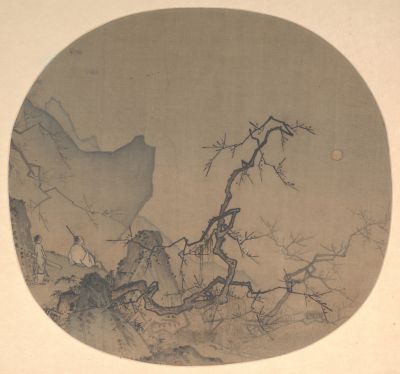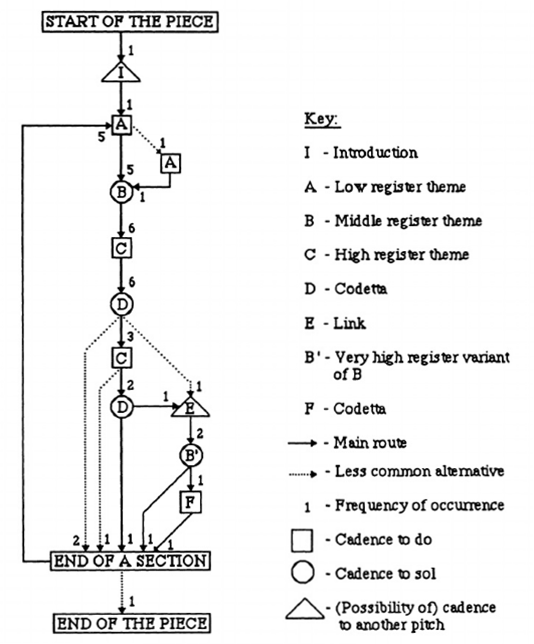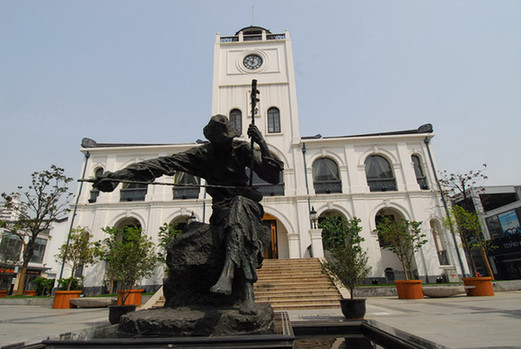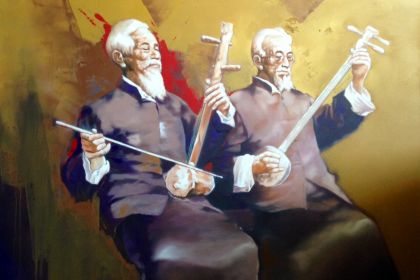Erhu
The Erhu fiddle melody recorded by blind Abing spread worldwide revealing composition methods of Chinese folk music

Viewing Plum Blossoms by Moonlight by Ma Yuan
Music Period: 20st Century Classical
Country: China
Genre: Folk
Composer: Hua Yanjun (Abing)
Piece of Music: Erquan Yingyue (The Moon Reflected on the Er-quan Spring)
One of the most recognizable Chinese folk tunes, Erquan Yingyue, also called The Moon Reflected on the Er-Quan Spring, was composed by the blind musician Hua Yanjun whose tempestuous fate is woven into the turbulent history of his homeland. Even though there are many legends of his virtuosity on the Erhu violin, the master recorded only three pieces for the instrument, all of them at the very end of his life in 1950.
In modern China, the Erquan Yingyue is a staple of any Erhu player's repertoire, whilst in the West, the melody is the subject of research of the composition methods of Chinese folk music.
Hua Yanjun, nicknamed Abing, was born in 1893 in the eastern Chinese city of Wuxi into the big family of a Taoist priest from whom he acquired musical skills and inherited a post at the temple. However, Abing’s life radically changed at the age of thirty, when due to his opium addiction and frequent visits to brothels he lost both his sight and job at the temple, becoming a wandering musician.
Giving street concerts, Abing developed his erhu skills to such a high level that the word of his music spread throughout the country, prompting two professors from the Central Conservatory of Music to make a trip to Wuxi with the goal of recording his works. By that time, Abing had already stopped playing music for several years over his rapidly deteriorating health, but after a three-day rehearsal, he agreed to record a few pieces.
Listen to Erquan Yingyue performed by Abing:
Abing died in 1950, only a few months after this historical recording.
His music gained a huge audience through radio broadcasts while his most famous work Erquan Yingyue received many orchestrations and even a ballet adaptation. In 1959, after a presentation at the China International Culture Association, the piece also met its success in the West and is often associated with China itself.
In 1994, musicologist Jonathan Stock published a detailed study of Abing's music in which he systematized the composition methods of Chinese folk music:

Listen to The Moon Reflected on the Er-Quan Spring performed by Zhongjie Han with Central Philharmonic Orchestra of China:
Despite such a small recorded repertoire, Abing is considered to be one of the most important Chinese musicians of the 20th century. A bronze statue of him was unveiled in downtown Wuxi in memory of the composer, while his tomb can be found in Xihui Park—the location of the Hui Spring which served as an inspiration for one of the most famous melodies of Chinese folk music.




